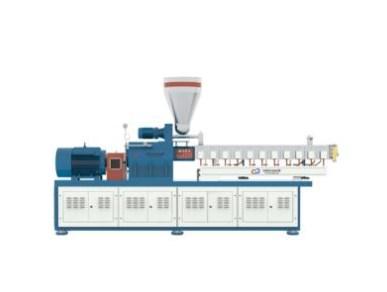Lab extruder machine is an essential tool in the field of material science, playing a vital role in the development and testing of new materials. These machines are used to process and shape materials, allowing researchers to study their properties and behavior under various conditions. In this article, we will explore the various ways in which lab extruder machines contribute to material development and the advancement of scientific knowledge.
Lab extruder machines are designed to process materials, such as polymers, ceramics, and metals, by forcing them through a die to create a specific shape or profile. These machines are typically smaller in size compared to industrial extruders, making them ideal for laboratory settings where researchers are working with small quantities of materials. The lab extruder machine consists of a barrel, a screw, and a die, which work together to process the material.
Role in Material Development
1. Material Characterization: Lab extruder machines are used to study the properties of materials, such as their flow behavior, viscosity, and mechanical properties. By processing the material through the extruder, researchers can gain valuable insights into its characteristics, which can be used to optimize its performance and develop new applications.
2. Material Processing: Lab extruder machines are also used to process materials into specific shapes and profiles, such as films, fibers, and tubes. This allows researchers to study the material's properties in a specific form and evaluate its suitability for various applications.
3. Material Testing: Lab extruder machines are used to test the performance of materials under various conditions, such as high temperatures, pressures, and shear rates. This helps researchers to understand how the material behaves under different conditions and identify any potential issues or limitations.
4. Material Development: Lab extruder machines are essential tools for developing new materials and formulations. By processing different materials and additives through the extruder, researchers can experiment with various combinations to create new materials with improved properties and performance.
5. Quality Control: Lab extruder machines are used to ensure the quality of materials by testing their consistency and uniformity. This is particularly important in the development of new materials, where any variations in the material's properties can have a significant impact on its performance.
6. Research and Development: Lab extruder machines are crucial for research and development in the field of material science. They allow researchers to study the behavior of materials under various conditions, develop new formulations, and optimize processing parameters to create materials with improved properties and performance.
7. Education and Training: Lab extruder machines are also used for educational purposes, providing students and researchers with hands-on experience in material processing and testing. This helps to develop a deeper understanding of the principles and techniques involved in material development and processing.
Lab extruder machines play a crucial role in material development, providing researchers with the tools and capabilities they need to study, process, and test materials. These machines are essential for advancing our understanding of materials and developing new materials with improved properties and performance. As the field of material science continues to evolve, lab extruder machines will remain an indispensable tool for researchers and scientists working to push the boundaries of what is possible.
